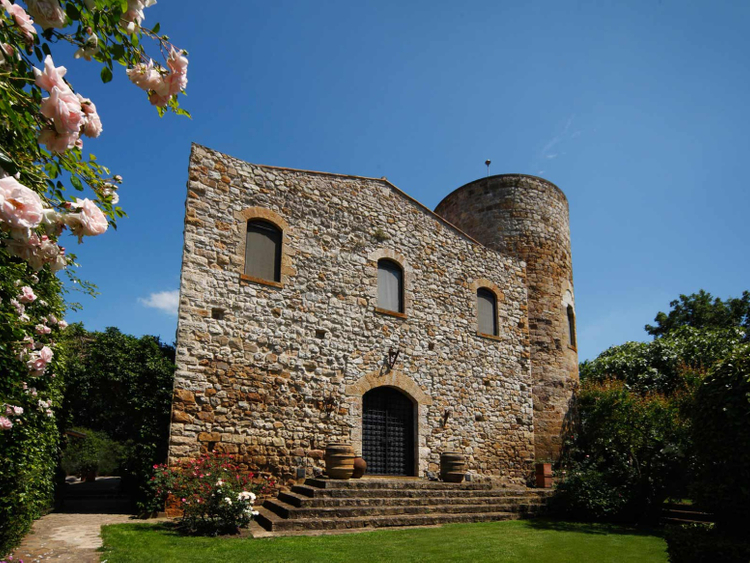A man’s home is his castle. For the Middle Eastern property investor, that statement rings truer now than ever before. Buyers from the region are increasingly investing in Europe and the UK, and castles and stately homes are of particular interest.
Investment from the region into Europe rose by 25 per cent to reach $7.9 billion (about Dh29 billion) in the first half of this year as compared to last year, real estate company Colliers International reported. Of the total cross-border investment of €44 billion (about Dh209.3 billion) into Europe during this period, Middle Eastern capital accounted for 13 per cent. The report expects regional investors to step up investments in Europe’s property sector in the next few years.
“Purchasers from the Middle East are often attracted to the tradition and history attached to these prestigious properties, and a trophy home in the UK countryside with easy access to the capital has long been a status symbol for them,” says James Grillo, Director of the Country Department at real estate agency Humberts in the UK. “When compared with other global purchasers, Middle Easterners are happier to put their stamp on existing traditional structures rather than building from the ground up.”
Creating opportunities
European feudalism saw castles and stately homes being built across the continent over centuries. All villages had, and often still have, grandiose homes or castles, while larger cities have both. Castles were traditionally strategically located, while stately homes were built on large land holdings and designed to display the wealth and position of the occupant.
These homes appear in the market for different reasons — lack of modern conveniences or simply because the owners can’t afford to maintain them.
In any case, say realtors, prices dropped after the economic downturn of 2008 — even up to 70 per cent in some markets, according to Barcelona-based realty firm Lucas Fox.
“The downturn created a lot of opportunities for Middle Eastern buyers,” says Amr Shamel, who handles business development and sales, Middle East and North Africa at Lucas Fox. He cites the example of Emirati and Qatari sovereign funds that have been buying distressed and trophy assets all over Europe since 2009. “Then the Arab Spring triggered a capital flight along with a strong need for asset diversification by investing abroad, recouping previous losses and avoiding further ones,” he adds.
Trophy homes
For buyers from stable countries such as the UAE, there are other considerations too. Grillo says, “The UK has long been a safe haven for international investment, particularly from the Middle East. The regional investors tend to be driven mainly by the UK’s quality of education, easy access to Europe and political stability.
“Moreover, trophy homes in the English countryside lend themselves to entertaining and hosting parties, which are high on the wish list especially in summer when these people come to the UK. Country sports such as horse racing and polo make these homes more appealing as there’s often space for high-quality facilities.”
John Coleman at the Edinburgh office of real estate consultancy Smiths Gore agrees. In Scotland, he says, buyers often focus on very large houses surrounded by grouse moors for hawking and falconry.
Beckoning chateaux
Other countries seeing interest from regional buyers are France, Spain and Italy, where old castles, and in some cases, entire villages are being snapped up. Trevor Leggett, Director — CEO, Leggett Immobilier, says, “It is about status, and we have the finest chateaux with glorious histories that can’t be replicated. High-net-worth individuals drive the fastest cars, drink the rarest beverages and want to live in the most prestigious homes in the world.”
Real estate agents say lifestyle and not profit determines the purchase of such properties. Edward de Mallet Morgan, Associate Partner, Knight Frank, says, “The Middle East’s top-end buyers have been savvy investors. They tend to retain properties for future generations too.”
Hard bargains
List prices can touch nearly €100 million, as in the case of Knight Frank’s Palais Venitien in Cannes, on sale for €95 million. However, there are properties from €5 million, says Leggett, while in Spain, the range is between €3 million and €15 million, according to Lucas Fox. In Scotland, castles that need rebuilding, such as the Lordscairnie in Fife, start from £200,000 (about Dh1.19 million), while those in immaculate condition cost about £10 million.
Phillippa Dalby-Welsh, Director, Country Department, Savills UK, says, “The enquiries we receive are for anything upwards of £4-5 million, while the majority of interest lies in properties between £5 million and £10 million. A handful of buyers look for super prime estates.” In addition, buyers pay 15-20 per cent more on interior design and furniture, particularly for run down properties.
Different criteria
As far as criteria that properties must meet goes, Leggett says,“Location is foremost, if you’re only interested in the best. Then come the questions, ‘Is it a signature building and is it photogenic enough to be associated with my brand?’”
Shamel says while renovated properties with high-quality finishing in classic buildings, prime locations and large cities are popular, some buyers go for other features such as the golden visa, which provides buyers of property worth €500,000 or more residency in Europe.
Taxation laws may also drive capital to a particular market. Dalby-Welsh says, “Although taxation tends to be a secondary reason for holding land, in the UK, there is 100 per cent relief from Inheritance Tax after a qualifying period of ownership, about two years. This provides a means of passing wealth to the next generation. Capital gains can also be rolled over to farmland, deferring the Capital Gains Tax.”













